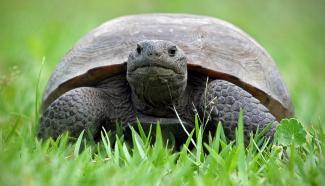Sequencing and characterization of the gopher tortoise genome

The gopher tortoise (Gopherus polyphemus) is native to the southeastern United States and is considered a keystone species for their roles in ecosystems such as pine savannas, which are highly abundant in Florida. The gopher tortoise is named for it’s burrowing behavior. It digs burrows for shelter, where it is protected from the predators and extreme temperatures. These burrows are used by a number of other species for shelter. The gopher tortoise is classified as a “threatened” species by the U.S. Fish and Wildlife Service because of habitat loss, death from automobiles, and predation by humans. The FSU Center for Genomics and Personalized Medicine launched a crowdsourcing campaign through sparkFSU to raise funds to sequence and characterize the genomes of the gopher tortoise and other threatened or endangered Florida species. The sequencing and characterization of genomes for the purpose of assisting conservation efforts, also known as “conservation genomics”, provides molecular signatures that can be utilized to study and monitor gopher tortoise populations which are vital to helping define appropriate actions for species conservation efforts. In addition, the genome can provide insights into the unique biological characteristics of the gopher tortoise and other endangered or threatened species. This project is being performed by undergraduate and graduate students at FSU under the supervision of the Director. Through this project, students are learning to perform whole-genome sequencing, from the extraction of DNA to the characterization and annotation of genomes. We would like to thank those who donated to this initiative which would not have been possible otherwise.

